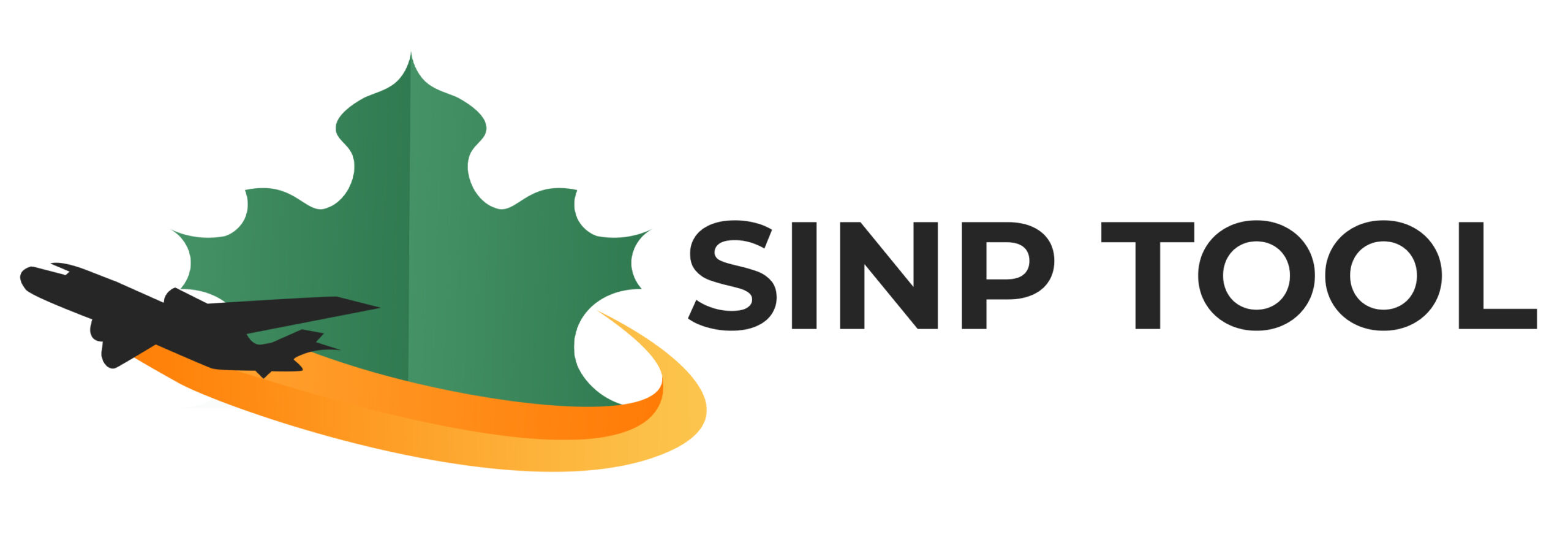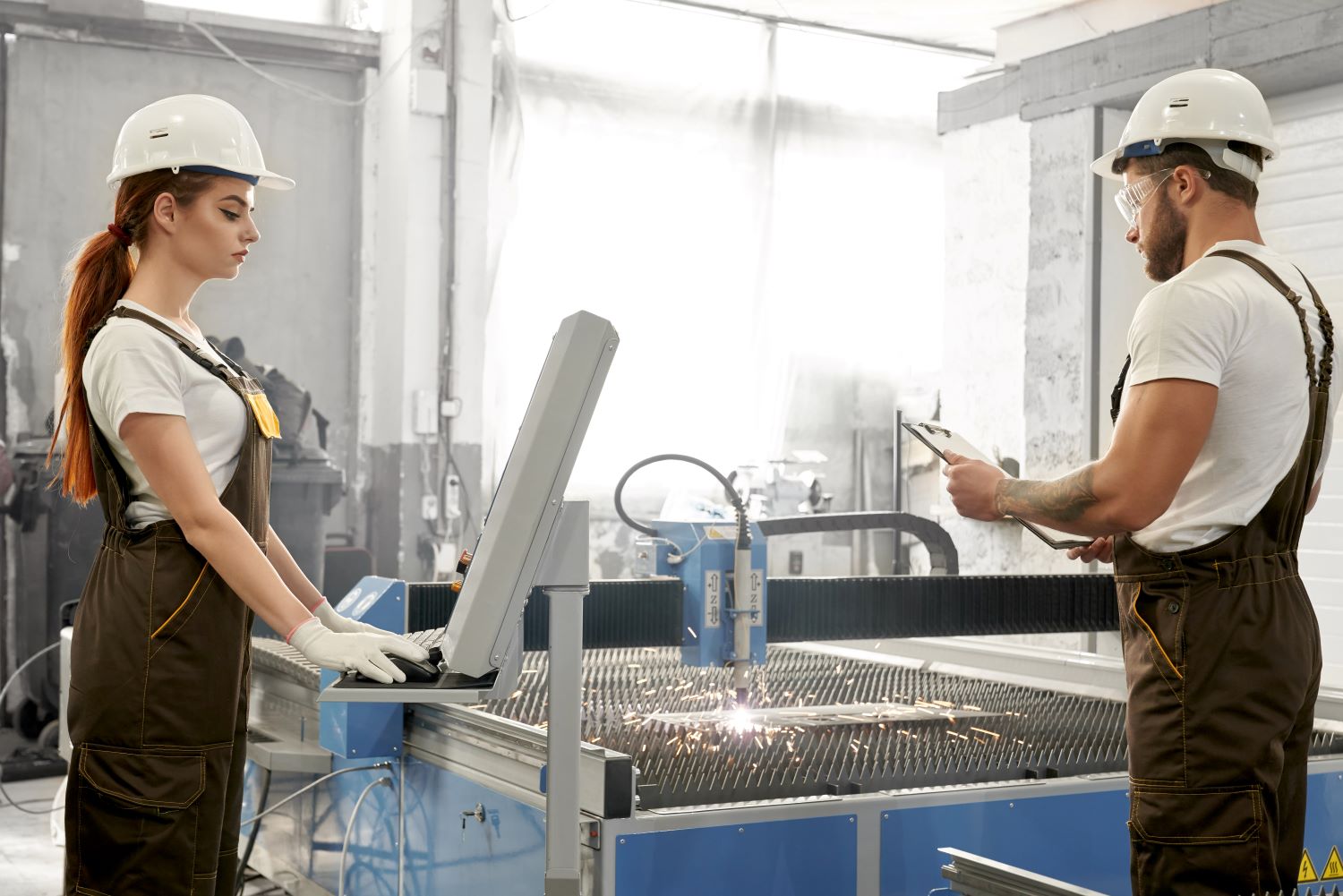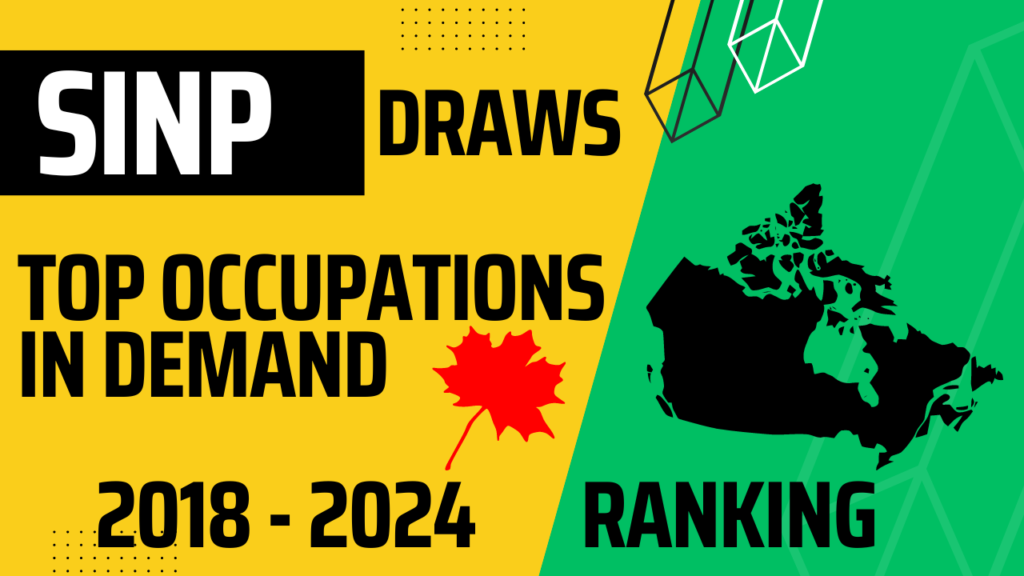Are you looking to immigrate to Canada as a Welder or Related Machine Operator – NOC 72106 which include other related occupations? Do you know Welders and Related Machine Operators are in demand and regularly invited in the province of Saskatchewan without the need for a job offer? Are you within the ages of 22 to 45? Do you have 1 to 10 years or more of working experience as a Welder or Related Machine Operator? Do you have a good English or French language ability? Do you have a post-secondary education and a three-year apprenticeship program required for trade certification?
Saskatchewan Top Ranking Occupations in Demand
If your answers are all yes, then you can meet the minimum eligibility points of 60 to plan your Canada immigration journey to the province of Saskatchewan through the Saskatchewan Immigrant Nominee Program (SINP).
The good news is that Welders and Related Machine Operators are in demand and has been drawn a few times in SINP’s round of invitations, presenting a good chance of getting an Invitation to Apply in the next SINP’s bi-weekly draws. The spoiler alert is that Welders and Related Machine Operators – NOC 72106 need a license to proceed with their application. Learn more here.
From the SINP ISW EOI Selection Results, the lowest EOI points ever drawn for Welders and Related Machine Operators – NOC 72106 is 60 points, the very minimum eligibility points for SINP and this was on August 16, 2023.
Below is the step-by-step guide to your Canada immigration journey as a Welder or Related Machine Operator using the SINP.
What is Saskatchewan Immigrant Nominee Program?
Saskatchewan Immigrant Nominee Program (SINP) is a Provincial Nomination Program which the government of Saskatchewan uses to invite eligible applicants willing to reside in the province of Saskatchewan to apply for Canada immigration in order to become permanent residents. It’s also the best pathway for professionals with years of working experience in a single occupation that is in demand in the province of Saskatchewan, who may often not be competitive for the Federal Skill Worker (FSW) Program because of their age and the extremely high CRS scores.
Why Saskatchewan Immigrant Nominee Program?
If you are looking to migrate to Canada, you would have by now looked at the various pathways for the best program that fit your need. Although the easiest pathway is the Federal Skilled Worker (FSW) Program, that has unfortunately become very competitive as the lowest ranked Comprehensive Ranking Score invited as of July 11, 2023, was 505. That is over the top for people outside of Canada.
Saskatchewan’s Provincial Nomination Program has become the best alternative routes for the majority as they are able to meet the eligibility requirements without a job offer. Also, Saskatchewan is the only province in Canada that invites Welders and Related Machine Operators, hence quite important to channel all your energy to SINP to get a nomination from the province.
What is SINP Point Assessment Grid?
In order to immigrate to Canada, Saskatchewan as a Welder or Related Machine Operator you need to assess your eligibility for the PNP program using the SINP Point Assessment Grid.
The Point Assessment Grid is a point-based system which awards points for primary eligibility factors such as age, education, work experience, and English and or French language ability for a maximum point of 80. This is particularly for persons looking to immigrate outside of the Saskatchewan province and outside of Canada.
Additionally, the Point Assessment Grid awards points for meeting the secondary eligibility factors such as having schooled for at least 12 months or worked for at least 12 months or having a close family relative living in Saskatchewan to demonstrate connection to the province for a maximum point of 30. This is particularly for persons who are able to go study in Saskatchewan on a valid student visa in a designated learning institution which gives them the opportunity to work on an open work permit.
This makes a total of 110 points to claim by meeting the primary eligibility factors and the secondary eligibility factors to increase your chances of ITA.
If you are outside of Canada like majority of us and have no second language and connection to the province, the maximum points you can pursue is 70 points and that is achieved by scoring the highest in each of the primary eligibility factors.
The minimum eligibility points for SINP is 60 points. However the higher your points, the higher your chances of receiving an Invitation to Apply (ITA), and once invited you have 60 days to submit your documents for verification against the points you have claimed to get a decision on your application.
How to Assess Your Eligibility
To assess your eligibility, understand the Point Assessment Grid and use the Online Eligibility Tool to determine the category you fit – whether occupation in demand (OID) or express entry (EE).
You must first determine your points based on the real case scenario of what is possible for you to get an invitation e.g., especially education, language ability and work experience, and work towards gathering the required documents.
It is important to be aware that, any points you claim should be points you can prove before you create an expression of interested profile.
How to Prove Your Eligibility
Based on the point assessment grid, you can only claim points for what you can prove with the required documents.
Age
Your age is determined by your national ID, birth certificate and some of your educational transcripts. The ideal age for the maximum points of 12 is between 22 to 34.
Education
You must do an education credential assessment of your highest post-secondary education. You can get the highest points of 20, if you have a master’s degree, and your education is related to your NOC.
Your highest education must be assessed for Canadian equivalency using the IRCC approved Institutions in Canada.
The fastest for Welders and Related Machine Operators is World Education Service.
Work Experience
You can only claim work experience if it was paid. Voluntary jobs such as internships are excluded. Years of work experience can be claimed in 2 categories:
- Last 5 years starting from the date of invitation.
- Last 6 to 10 years starting from the date of invitation.
Any person in current employment with a continuous work experience for 10 years without any gap can achieve the highest points of 15. Such a person can comfortably track work experience from their current job to the last 5 years and continue from the last 5 years to 10 years.
Persons with gaps in between their work history can only claim the period of work in the same occupation within the 2 timeframes.
Proving work experience is by the following:
- Reference letter.
- Pay slips.
- At least one additional government issued documents like
- Pension statement
- Social security statement
- Work permit, work visa or labor card for any foreign work experience.
- income tax certificate
- Government employment contract
- Any additional documents related to your role from your company e.g., emails you were in copy or sent to you.
Reference letter has some key requirements to be accepted as proof of work experience. It is required to have the following;
- Be on company letterhead which has physical address and contact number.
- Introduce the type of business the company does.
- The duration of your employment.
- The hours of work to prove it was full time hence 40 hrs. a week ought to be mentioned.
- Your job title – not the determining factor.
- Your job description – the key determining factor for accepting your claim for the NOC.
- Your monthly salary indicating it was a paid job.
- Signed by the HR, or Supervisor
- Must have the email address and contact number of the signatory.
Those who are self-employed may only claim work experience if they are in a managerial NOC.
- Business license and self-employment tax documents
- Proof of income
- Reference letters from clients.
Language Ability
You are required to demonstrate language ability in English or French or both by having an English or French proficiency exam result valid within the last 2 years.
If you are an English speaker, you must take IELTS General or CELPIP exam whiles French can take TCF or TEF exam and convert to Canadian Language Benchmark (CLB)
The minimum eligibility level for the SINP Occupation in Demand is CLB 4 for 12 points whilst the highest language level is CLB 8 for maximum of 20 points.
If you have a valid language test result that is equivalent to CLB 7, you can create an express entry profile under the FSW and use the SINP Express Entry category to link to your express entry profile.
Check the Language Test Equivalency Chart to convert your language test results to CLB.
Connection to the Province
Connection to the province can be established through at least a 12-month certificate program showing successful completion of the program in the province; a 12-month working experience on a valid work permit proven by an employment reference letter; and any family relatives from parent, siblings, uncles, aunties and first cousins who live in Saskatchewan, proven by their income statements, utility bills, and permanent residence status in Canada.
Proof of Fund
Canada wants skilled migrants to be able to settle themselves for at least 6 months by which they would have gotten a job. This brings some strong requirements on settlement funds for immigrating to Canada based on family size.
According to IRCC, Proof of fund must cover spouse and dependent children even if they are not coming with you to Canada.
SINP particularly needs your funds to be at least 3 months before submitting an application following an invitation.
Make sure your funds are at least 1 month old before you create an expression of interest profile, since you will have 60 days to submit an application to make a total of 90 days for your funds to be accepted.
Proof of fund must either be in your name or your spouse’s name (I was made ineligible because my fund was in my business account). Also, sponsorship from another family member is not accepted. It has to be fund you or your or both of you own.
Always refer to IRCC’s Proof of fund requirements.
The primary proof of fund is yours or your spouse’s personal current or savings account.
A personal bank statement with a letter from your bank confirming you or your spouse is the account owner, when the account was opened, and the balance as shown in the statement. The letter must be on the banks letterhead.
The secondary proof funds must be liquid funds that can easily be withdrawn when needed to be accepted as proof of fund. These include:
- Bonds
- Cash value life insurance
- Guaranteed Investment Certificate (GICs) or Certificates of Deposit
- Mutual Funds
- Provident Funds (an official letter from the provident fund organization indicating the amount of funds that are accessible is required)
- Registered Retirement Savings Plans (RRSPs)
- Stocks
- Tax Free Savings Accounts (TFSAs)
- Term deposits and time deposits (must be valid at the time of application and remain valid throughout the entire application process)
- Treasury Bills
How to Create Your Expression of Interest Profile
Now that you have gathered the required documents to prove the points you claim, you can go ahead and create a profile on OASIS using this link here.
How to Submit Your Documents
Once invited, you have 60 days to submit your documents.
Using the same OASIS account, you are able to submit your documents for your:
- birth certificate
- national identity card
- educational credential assessment,
- post-secondary educational certificates and transcripts,
- professional qualifications,
- language proficiency result,
- proof of work experience,
- connections to the province,
- proof of fund.
Again, you must submit:
- marriage certificate,
- birth certificates of your spouse and children,
- additional family information and
- personal history for both you and your spouse.
Check the video on how I submitted mine here
What is the Processing Time for SINP Application?
From my experience, it took SINP 1 month to decide on my ineligibility based on proof of fund and on the second attempt, it took 1 month to get a nomination. Processing times however varies based on the completeness of your application. The more confusing your documents are the longer it takes for processing. The rule is to keep it simple, precise and specific and provide enough relevant documents to prove your claim.
The average processing time is 3 months for a decision to be made on your application.
What Decision Can Be Made on Your Application?
A decision from SINP can be a provincial nomination from Saskatchewan, which will award you 600 points to kickstart the process of moving to Canada, Saskatchewan; or application is made ineligible for you start again, correct the reasons given and wait for another invitation; or application is PIU ineligible. That is where the Program Integrity Unit (PIU) has suspected you of misrepresentation and requests you to respond within 10 days, upon which a decision will be made to either ban you from applying to SINP for 2 to 5 years or proceed with your application.
How to Confirm You Meet NOC 72106 – Welders and Related Machine Operators
The National Occupational Code for Welders and Related Machine Operators is NOC 72106 and that comprises a group of occupations listed below:
- Acetylene welder
- Aircraft welder
- Apprentice welder
- Arc welder
- Arc welder – pipeline
- Assembler tack welder
- Auto body solderer
- Automated welding machine operator – flash butt process
- Automatic welding machine operator
- Aviation welding technician
- Battery lead burner
- Battery lead-burner operator
- Blowtorch operator
- Blowtorch welder
- Boiler welder
- Brazer
- Brazer and hammerer
- Brazing machine operator
- Brazing machine setter
- Cable welder
- Combination welder
- Dielectric welder
- Downhand welder – pipeline
- Drilling platform welder
- Drilling rig welder
- Electric arc welder
- Electric spot welder
- Electric spot welder operator
- Electric spot-welding machine operator
- Fabrication welder
- Fit-up welder
- Flame-brazing machine operator
- Flame-brazing machine setter
- Flash butt welder
- Furnace brazer
- Furnace solderer
- Gas and arc welder
- Gas brazer
- Gas welder
- Gas-shielded arc welder
- Gas-shielded arc welding machine operator
- General welder
- Hand arc welder
- Hand electric arc welder
- Hand resistance welder
- Heliarc welder
- Hot gas welder
- Hydrogen braze furnace man/woman
- Hydrogen braze furnace operator
- Induction brazer operator
- Induction solderer
- Industrial welder
- Iron brazer
- Jig welder-fitter
- Journeyman/woman welder
- Laser beam machine-welder operator
- Laser beam welder
- Laser beam welding machine operator
- Laser welding operator
- Lead burner
- Lead welder
- Machine operator – welding, brazing and soldering
- Machine type solderer
- Machine welder
- Maintenance welder
- Mesh-welding machine operator
- Metal brazier and heater
- Metal inert gas (MIG) welder
- Metal solderer
- Metal straightener and heater
- Metal welder
- Oxyacetylene torch welder
- Oxyacetylene welder
- Oxyhydrogen welder
- Pipeline welder
- Portable spot welder
- Precision welder
- Pressure vessel welder
- Production induction brazier
- Production line solderer
- Production line spot welder
- Production line welder
- Production spot welder
- Production welder
- Radio-frequency welder
- Resistance brazer
- Resistance seam welder
- Resistance welder
- Resistance welder tender
- Resistance welder-setter
- Resistance welding machine setter
- Resistance welding set-up man/woman
- Rig welder
- Shielded-metal arc welder
- Side seaming tender
- Solderer
- Solderer-dipper
- Soldering machine operator
- Spot resistance welder
- Spot welder
- Submerged arc welder
- Submerged arc welding machine operator
- Tack welder
- Thermite welder
- Tool and die welder
- Torch brazer
- Torch brazing machine setter
- Torch welder
- Tungsten inert gas (TIG) welder
- Type-soldering machine tender
- Vibration welder
- Welder
- Welder apprentice
- Welder operator
- Welder-assembler
- Welder-fitter
- Welding lay-out man/woman
- Welding machine operator
- Wire welder
To claim work experience in NOC 72106, you must perform these lead roles in any of the above occupations:
- Weld ferrous and non-ferrous metals. This unit group also includes machine operators who operate previously set up production welding, brazing and soldering equipment.
- Be employed by companies that manufacture structural steel and platework, boilers, heavy machinery, aircraft and ships and other metal products, and by welding contractors and welding shops, or be self-employed. Apprentices are also included in this unit group.
Your job description must relate to at least 70% of the NOC job description below:
Welders
- Read and interpret blueprints or welding process specifications
- Operate manual or semi-automatic welding equipment to fuse metal segments using processes such as gas tungsten arc welding (GTAW), gas metal arc welding (GMAW), flux-cored arc welding (FCAW), plasma arc welding (PAW), shielded metal arc welding (SMAW), oxy-acetylene welding (OAW), resistance welding and submerged arc welding (SAW)
- Operate manual or semi-automatic flame-cutting equipment
- Operate brazing and soldering equipment
- Operate metal shaping machines such as brakes, shears and other metal straightening and bending machines
- Repair worn parts of metal products by welding on extra layers.
Welding, brazing and soldering machine operators
- Operate previously set up welding machines such as spot, butt and seam resistance or gas and arc welding machines to fabricate or repair metal parts
- Operate previously set up brazing or soldering machines to bond metal parts or to fill holes, indentations and seams of metal articles with solder
- Start up, shut down, adjust and monitor robotic welding production line
- Assist with the maintenance and repair of welding, brazing and soldering equipment
- May adjust welding heads and tooling according to work specifications.
Your highest education for which you are claiming point must be related to the NOC such as:
Welders
- Completion of secondary school is usually required.
- Completion of a three-year apprenticeship program or a combination of over three years of work experience in the trade and some college or industry courses in welding is usually required to be eligible for trade certification.
- Trade certification is compulsory in Alberta and available, but voluntary, in all other provinces and the territories.
- Red Seal endorsement is also available to qualified welders upon successful completion of the interprovincial Red Seal examination.
Welding, brazing and soldering machine operators
- Some secondary school education is required.
- Several months of on-the-job training are usually provided.
- Experience as a machine operator helper may be required.
- Experience with robotics may be required.
What are Your Chances of ITA?
Before you can know your chances of ITA, you need to go back to the beginning of SINP selection results and check how frequent your NOC 7237 (the 2016 NOC version) and NOC 72106 (the 2021 NOC version) have been selected from the selection results, published my SINP whenever they do a draw.
We have already done the hard work for you using our SINP Self-Assessment and Trend Analysis Tool.
All you need to do is to continue to build on the database moving forward as you look out for the next ITA for your NOC 72106
Once the template is updated with latest draw, you can estimate your chances of an ITA is based on the trends.
Take action now to start your journey today.
There’s no wasting time now that you know NOC 72106 is an occupation in demand.
Use our SINP Self-Assessment and Trend Analysis Tool to plan your immigration journey.
Planning is everything in Canada Immigration.
What Challenges Should You Overcome?
The moment you envision Canada immigration, don’t tell everyone who is not in the same situation as you. You are only going to bring unnecessary attention to yourself. Only connect with like-minded people like immigration groups.
Everybody’s journey is different; you can expect few hurdles along the way such as:
- Proof of fund is a challenge – don’t give up. Your financial situation can change.
- Employer may not want to give you reference in the required format – don’t give up. HR is a person, treat her like consultant and pay for the service.
- You may not get a CLB 8 – keep writing until you get a CLB 8
- Education may not be related to your NOC – don’t give up. Do a master’s degree.
What Strategies Can You Use to Increase Your Points?
Think of immigration as a journey. The destination doesn’t happen just like that. You need preparation and focus. You need a master plan. Think of those who travel to other countries and spend years, break previous marriage ties to re-marry just for documentation. With SINP you get permanent residency right from your home country with your family ties intact. So, it’s worth the wait and having patience for the opportunity to immigrate.
While in your home country, keep pursuing your career goals by enrolling in higher education, learning a second language and taking life one step at a time with focus on documents needed to prove your points. Every new job you get, make sure to secure the required documents for your immigration journey.
You can also pursue further education in the province to fast-track the process and chances of working in the province for additional points.
Steps for SINP Nomination
- Step 1 – Assess your eligibility. Click here!
- Step 2 – Do your education credential assessment. Click here!
- Step 3 – Do your language test and convert. Click here!
- Step 4 – Gather all your required documents to prove work experience. Click here!
- Step 5 – Build your proof of fund. Click here!
- Step 6 – Create your expression of interest profile. Click here!
- Step 7 – Track your progress, study the trends, evaluate your chances of ITA and stay ready. Click here!
- Step 7 – Submit your documents upon an ITA (Pay $350 application fee). Click here!
- Step 8 – Submit any additional document requests (ADR).
- Step 9 – Pray for nomination.
Steps for Canadian Permanent Residency
- Step 1 – Follow the instructions after nomination.
- Step 2 – Submit medical certificates and police clearance certificates.
- Step 3 – Pay application fee for permanent residency.
- Step 4 – Submit your passports upon request.
- Step 5 – Receive electronic travel authorization.
- Step 6 – Receive permanent residency upon landing in Canada.
Best of luck!





